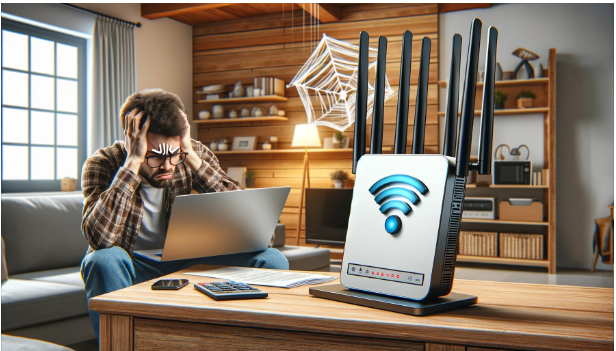|
|
||
|
TroubleshootDoes it feel like your WiFi has a mind of its own, working perfectly one minute and then dropping out the next? Have you ever been in the middle of an important video call, only to have your signal stutter or disappear entirely, leaving you frantically trying to reconnect? We've all been there, grappling with WiFi woes that seem to arise at the worst possible times. In this note, we will take a look into the world of WiFi troubleshooting, where we'll uncover the mysteries behind unstable connections, slow speeds, and the dreaded 'no internet' indicator. Whether you're a tech newbie or a seasoned netizen, this guide will arm you with the knowledge to tackle common WiFi issues head-on, transforming you into the wireless warrior your home network needs. Together, we'll learn how to diagnose and fix the most common WiFi hiccups, ensuring that your online life runs as smoothly and uninterrupted as your favorite streaming service. So, grab your devices, rally your routers, and get ready to banish those WiFi blues for good!
Have You Checked the LED Indicators?Your router's LED lights are like its way of communicating with you. They can tell you a lot about what's going on with your WiFi. A quick glance at these can let you know if your internet connection is working correctly, if your router is experiencing issues, or if it's just performing a routine update. Knowing how to read these indicators can save you a lot of time and frustration. Whenever you have any issues, my first suggestion is to check LED indicators on your WiFi device(e.g, WiFi Router / Access Point). What kind of indicators the device has and what is it meant by each indicators are different from each hardware. I know nobody likes to read document/user manual, but keep the part of the document about indicator in handy place or search on internet for the model name to get the document. Have You checked the shortage(outage) map for your ISP (Internet Service Provider)?Before diving into troubleshooting your WiFi network, it's wise to check if there is a reported service outage in your area. Many internet service providers have real-time outage maps or automated systems you can call to verify if there's a known issue. This can save you time by confirming whether the problem is on your end or a wider issue affecting multiple customers. In most cases, your ISP's outage map on internet by searching 'Outage map of [ISP name]'. Why Does My WiFi Keep Disconnecting?It's one of the most common questions in the digital age. From interference from your kitchen appliances to an overtaxed network struggling under the weight of too many devices, the reasons for WiFi disruptions are as varied as they are frustrating. Understanding the root causes of these issues is the first step towards a smooth, stable internet experience. There are so many potential root causes for WiFi disconnections and it is hard to find the exact root cause in single shot. But it would be good to know some common list of rool cause as listed below
Could My Router Placement Be the Problem?Absolutely! Where you place your router can have a massive impact on your connection quality. If your router is hidden away in a corner, you might be unintentionally weakening your signal. It's like trying to have a conversation from opposite ends of a crowded room - the further apart you are, the harder it is to hear each other. Is There a Way to Strengthen My Signal?Indeed, there is! Sometimes, the solution is as simple as moving your router to a better location or adjusting your antennas. Other times, it might involve changing your WiFi channel or updating your firmware to give your network the boost it needs.
|
||
